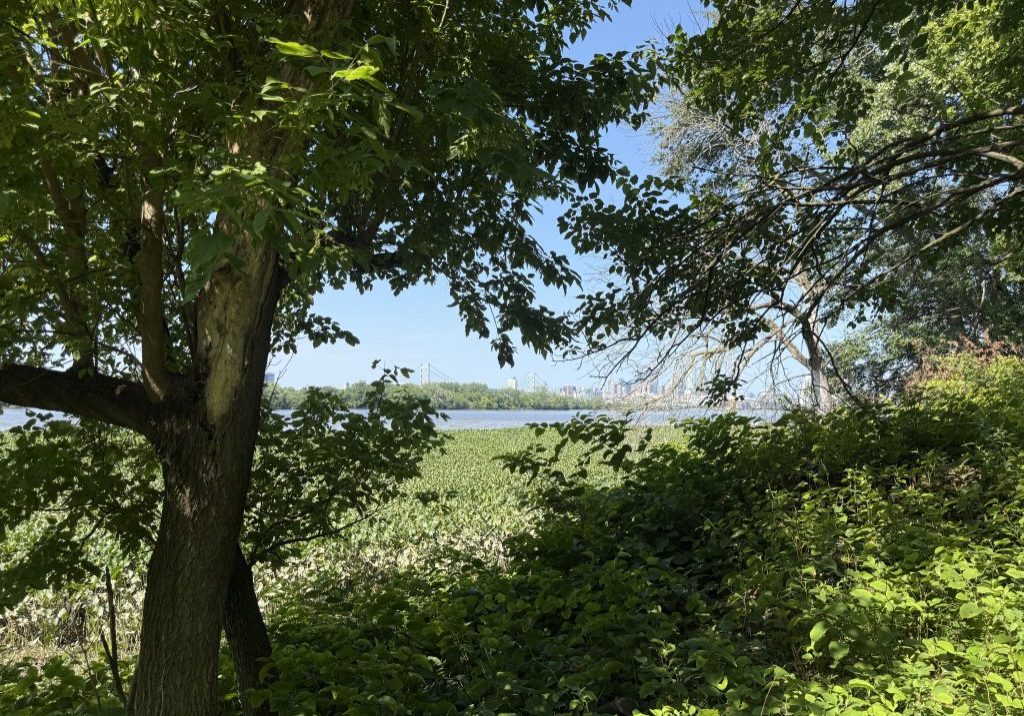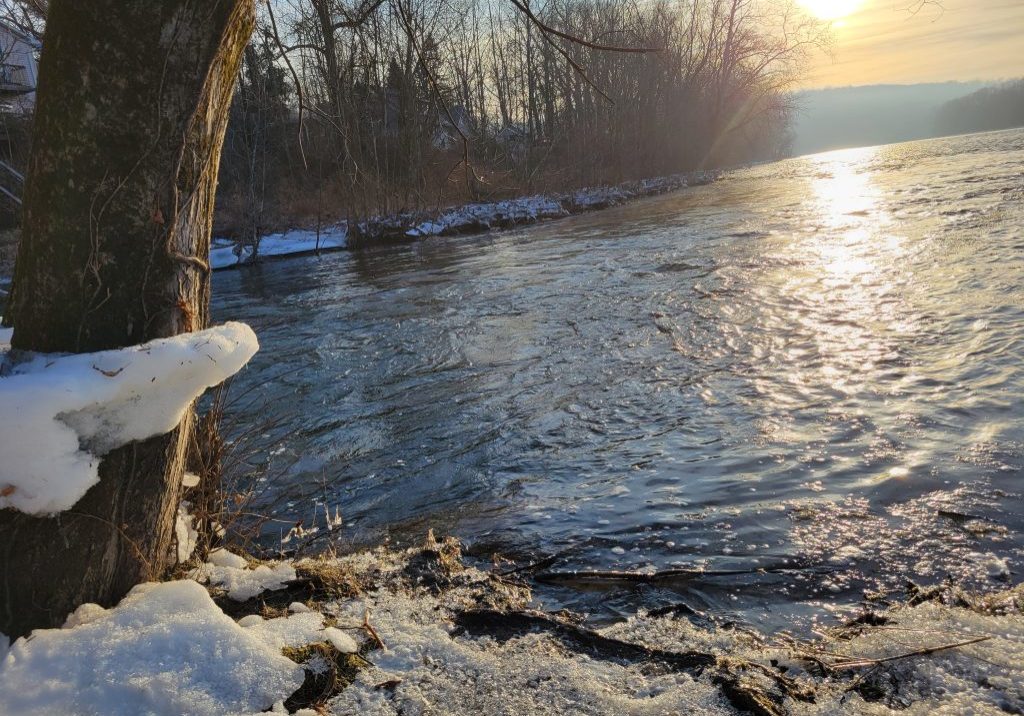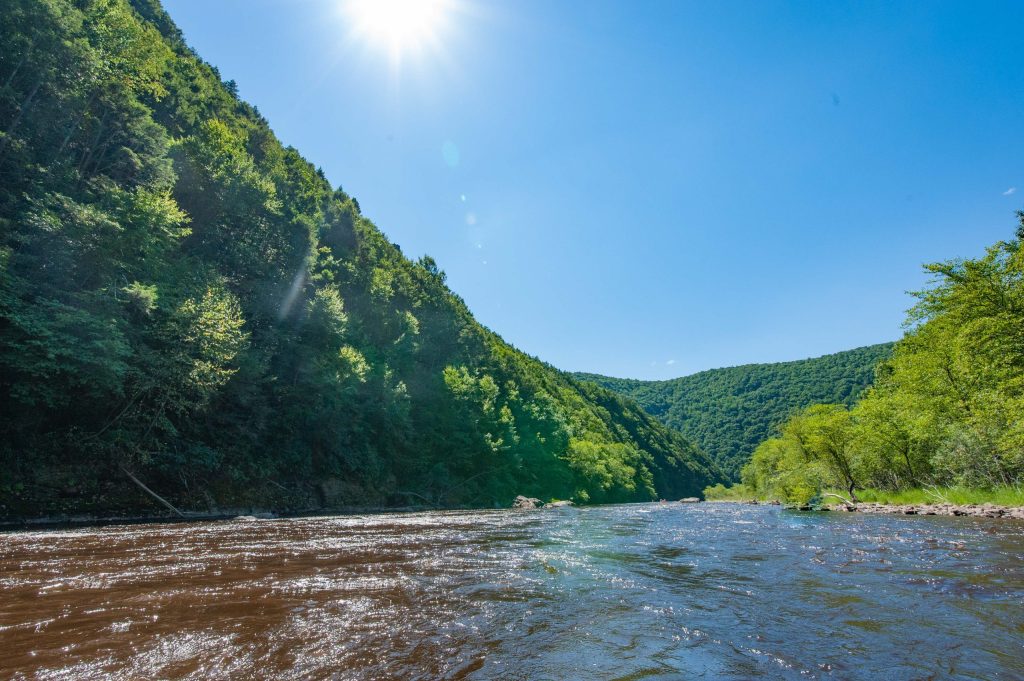
Lehigh River named among top 10 most endangered rivers in the country
A proliferation of warehouses threatens the Lehigh, the Delaware River’s second-largest tributary, an advocacy group said.
| April 18, 2023
A proliferation of warehouses and distribution centers, which bring more paved surfaces and dirtier, faster runoff, threatens the Lehigh River to the point that it’s among the country’s most endangered rivers, an advocacy group announced on Tuesday.
The group, American Rivers, released its annual list of the top 10 most endangered rivers, with the Lehigh ranked No. 7.
An American Rivers spokeswoman said there is some weighted value to the list, based on the significance of the river and the magnitude of the threat. For instance, the Colorado River, which is listed as No. 1, is the water source for 40 million people. But, she emphasized, all of the rivers on the list are endangered.
The Lehigh, the backyard river for 500,000 people and a major outlet for recreational users, is being threatened by the rapacious growth of warehouses in the Lehigh Valley, the group said.
Coming next week: The start of a special investigative report by Delaware Currents. How many warehouses are proposed in all or parts of 14 counties of New Jersey that make up the Delaware River watershed and how many square feet could they occupy? Answers to those questions have not been reported — until now.
“This poorly planned development threatens the Lehigh River by converting critical forest and wetlands to hard surfaces — roofs and parking lots,” the group said. “These impervious surfaces prevent rainwater from soaking into the ground. Instead, warm, salty, dirty water runs off the pavement directly into the river and its tributaries.”
To keep up with the growing demand of e-commerce and as available space immediately near major ports in Pennsylvania and New Jersey has shrunk, warehouses have sprouted along major transportation corridors in the Lehigh Valley where land is cheaper and undeveloped.
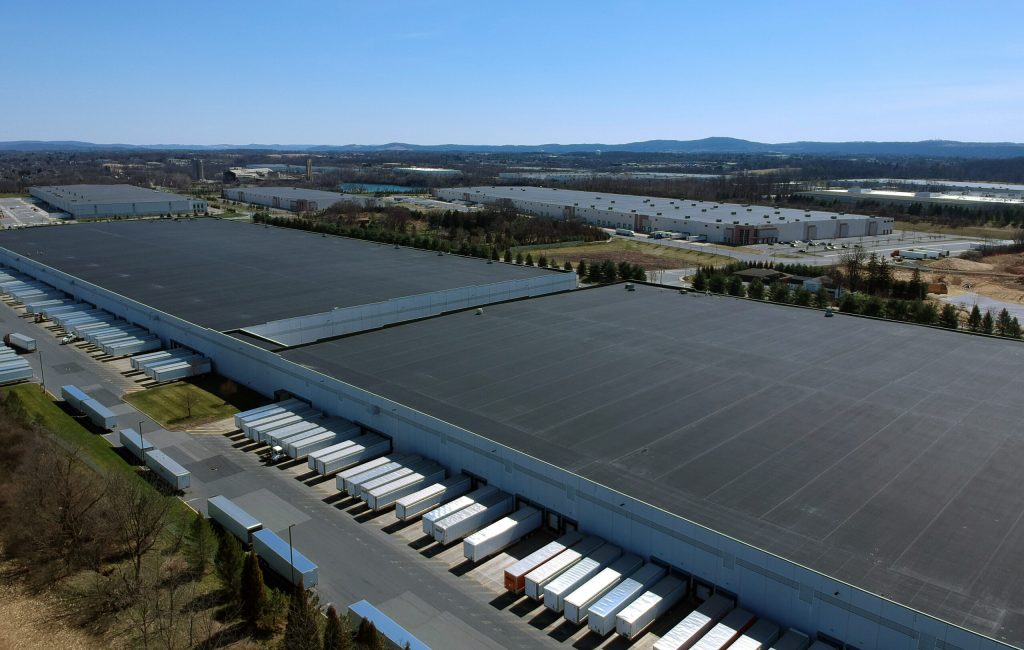
Acres of warehouses and distribution centers sprawl out in the area of Hanoverville Road north of Bethlehem on Saturday, April 2, 2022. (Keith R. Stevenson/SAVImaging.com)
Since 2017, municipalities have approved nearly 23 million square feet of industrial space — a 26 percent increase in such space in just five years, the Lehigh Valley Planning Commission said in its annual report. Industrial space includes manufacturing, logistic and warehouse uses.
“There’s no indication it will slow anytime soon because another 21.5 million square feet has been proposed but has not yet been approved,” the report noted.
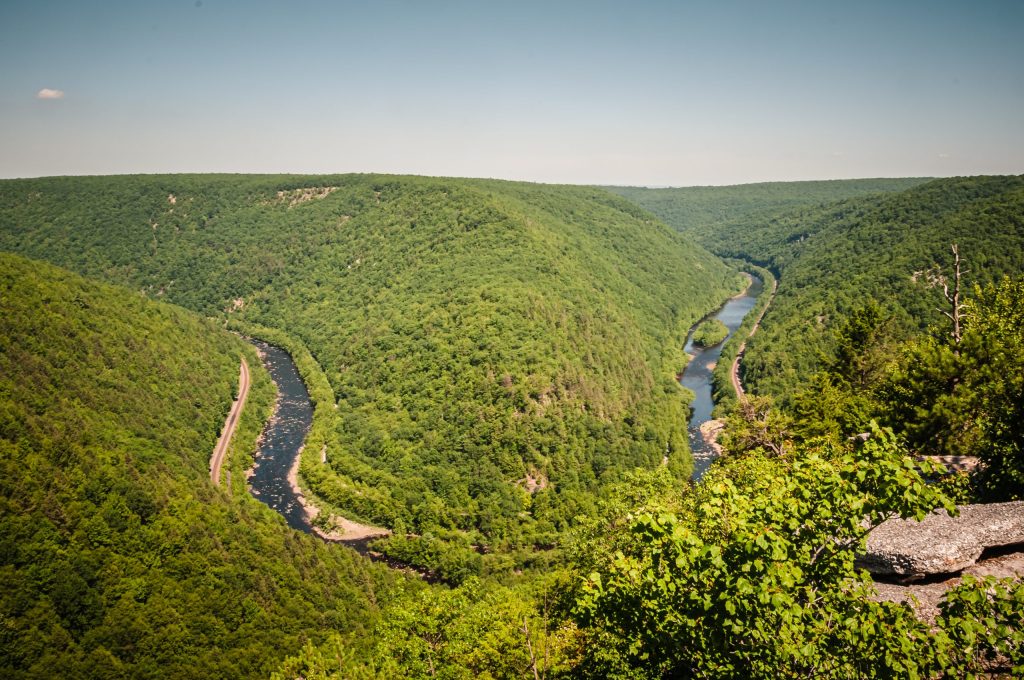
The Lehigh River is in the backyard river for 500,000 people and a major outlet for recreational users. PHOTO BY TOM STORM PHOTOGRAPHY
Runoff and water pollution linked to development
In its announcement, American Rivers said the warehouses and logistics centers cover more than four square miles – or more than 2,560 acres – and said there’s another square mile of development in the planning stages.
“What makes the threat of irresponsible land development so challenging to address is that it is a offers potential for non-point source pollution,” said Donna Kohut, the Delaware River Basin campaign manager for Citizens for Pennsylvania’s Future.
“Instead of being able to point to a factory dumping waste into the river, land development damages watershed through death by a thousand cuts,” she said in an email. “These impacts – increased runoff, thermal pollution, contaminants (like road salt) – happen slowly over time as land development expands across the landscape. That makes the impacts very difficult to track and connect directly back to the source.”
A map analysis by the National Oceanic and Atmospheric Administration that drew on 2010 data shows that the Hydrologic Unit Code that takes in the Lehigh and Delaware Rivers had 26 percent impervious surface cover versus 24 percent that was forested.
In general, studies have found that water quality in a watershed is significantly affected once impervious surfaces, such as buildings, parking lots and roads, cover more than 10 percent of a watershed’s surface.
The volumes of water rushing into streams can stir up turbidity in the waters, making it unhealthy for aquatic life, and change the contours of a stream to make it wider and shallower.
Cold-water fish, which rely on underground aquifers to recharge and to keep water temperatures low, can be threatened because the water can be hotter as a result of the paved surfaces.
A water quality report last year by the Pennsylvania Department of Environmental Protection found that about half of the streams in Lehigh and Northampton Counties were considered “impaired.” That is, they did not meet at least one of four standards in the federal Clean Water Act because of contaminants or other substandard conditions.
Part of the Lehigh is designated as one of Pennsylvania’s Scenic Rivers and it is the second-largest tributary of the Delaware River, which is the source of drinking water to millions of people.
A call for solutions
“I don’t think by any means that the development we are seeing is a death sentence for the river,” Kohut said, noting that the Lehigh has maintained a “pretty stable” ecosystem even in the face of past industrial uses like mining and timber.
Still, it does not mean that corrective measures should be ignored.
It’s important to protect what is pristine so resources can be invested in helping those streams that are impaired, Kohut said. It’s much more costly to clean what has become polluted than it is to protect what is already clean.
American Rivers called on Pennsylvania state lawmakers to enact the Riparian Buffer Protection Act.
The proposal would ensure that all waterways in the state are guaranteed buffers of at least 100 feet. Streams categorized as High Quality or Exceptional Value would get buffers of 300 feet, an increase from 150 feet.
Riparian buffers trap pollutants and sediments that might otherwise reach streams and degrade their quality. Buffers also absorb carbon dioxide, which help to regulate the climate globally.
Riparian buffers provide about $11,000 per acre through these services and $9,000 of carbon storage benefits per acre per year, according to a report released last year.
American Rivers also called for state and federal members of the Delaware River Basin Commission to fully fund the agency. Full funding would allow it to do more monitoring, research and program work, which, by extension, would help places like the Lehigh, Kohut said.






